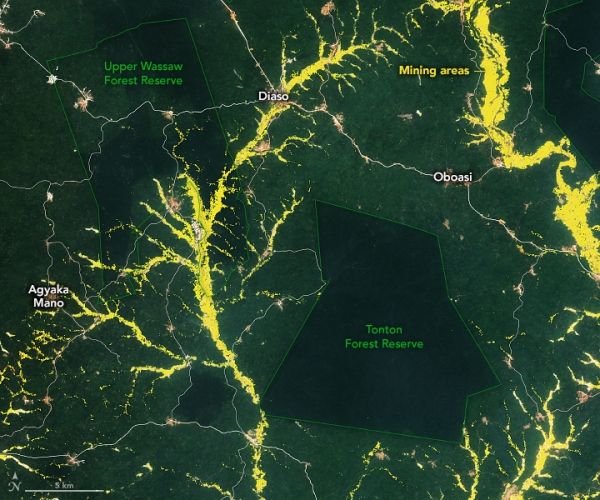Researchers are using satellite data to locate small mines that can cause long-term damage to forest communities and human health.
Ghana is one of the leading producers of gold in Africa and the seventh leading producer in the world. Large commercial companies mine the majority of it using heavy machinery. But about 35 percent is extracted through small-scale mines, many of which operate informally or without a valid license.
This unregulated small-scale and artisanal gold mining is known locally as galamsey, a slang word derived from the Ghanaian words “gather” and “sell.” About one million Ghanaians engage in the practice, supporting about 4.5 million people in the country. Many of the galamseyers live in poverty, and their activities often come at a cost to both human health and the environment.
Although individual galamsey sites cover less area than an industrial mine, their cumulative effect on the landscape outweighs those of larger mines. In the southwestern forests of Ghana, for instance, the footprint of small-scale mines is nearly seven times greater than that of industrial mines. The mercury and heavy metals used in galamsey can contaminate drinking water for entire communities. It also causes major health issues, such as kidney problems and neurological disorders, to those continually exposed to the metals.
Continue reading at NASA Earth Observatory
Image via NASA Earth Observatory




